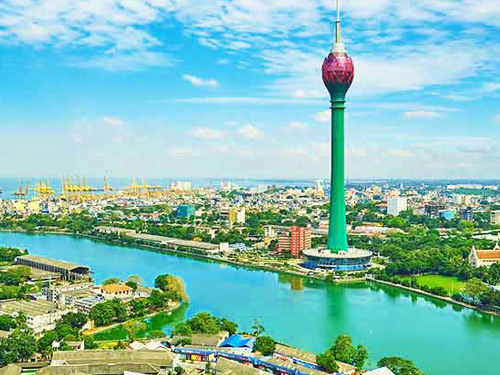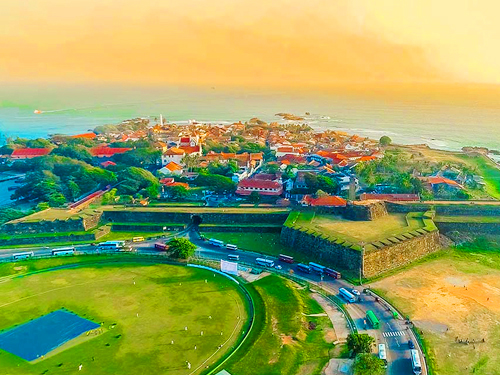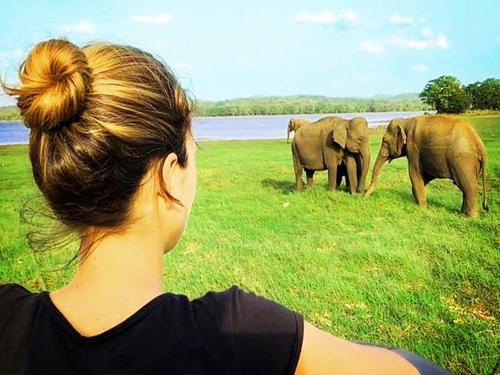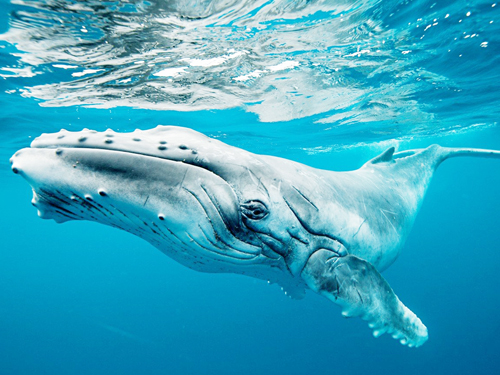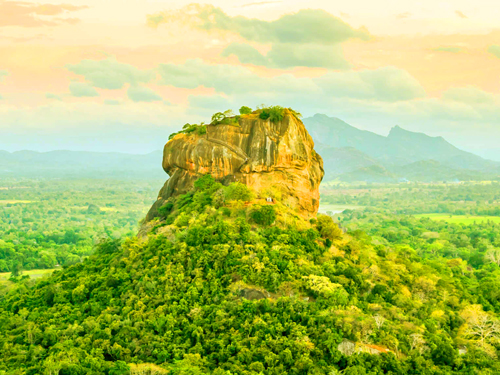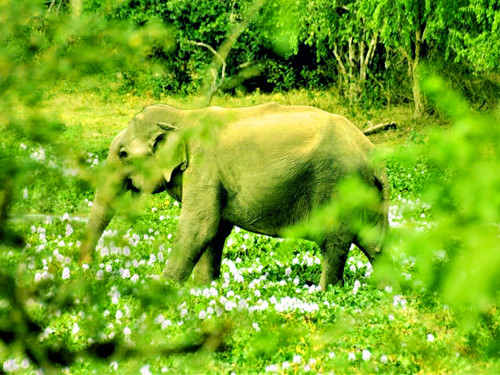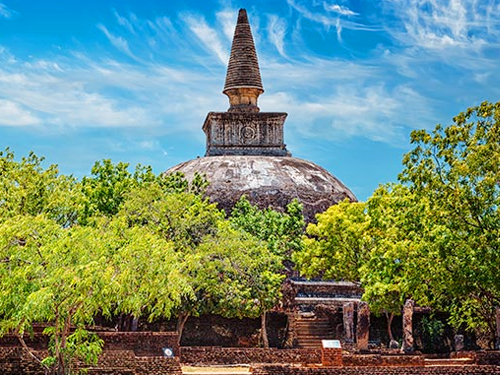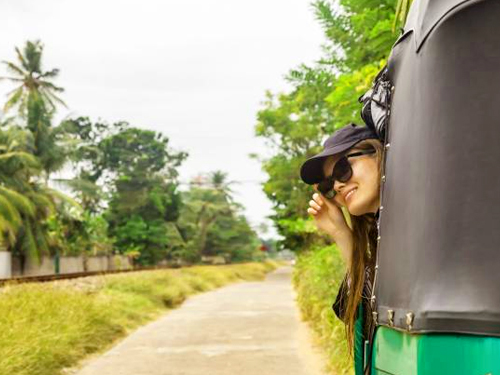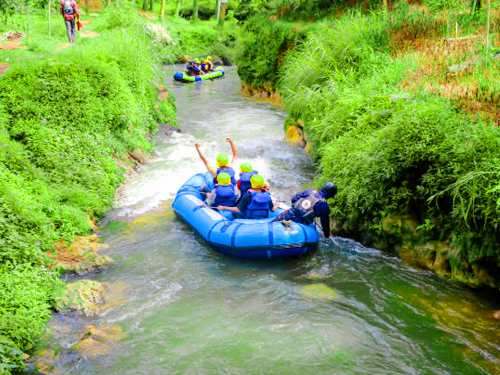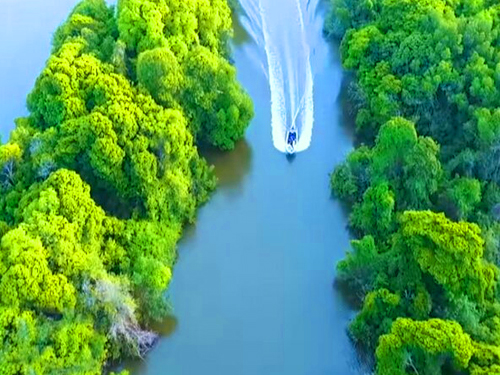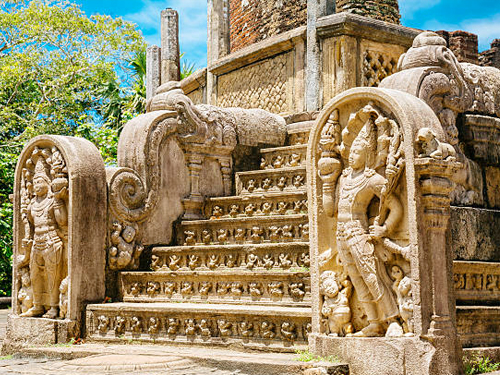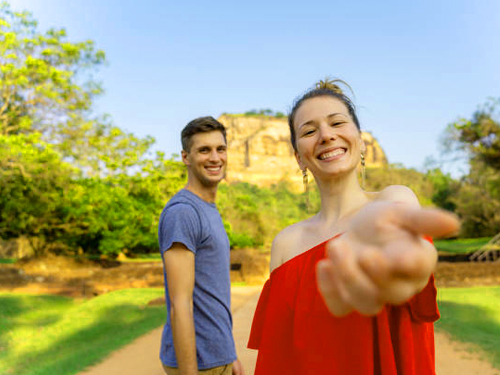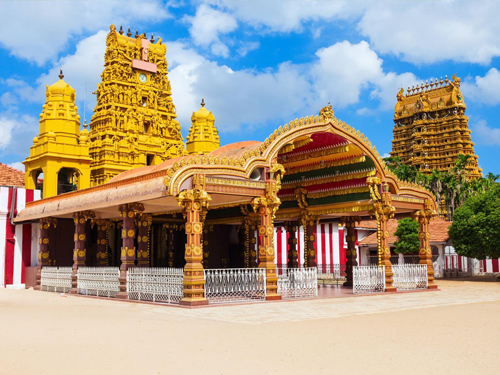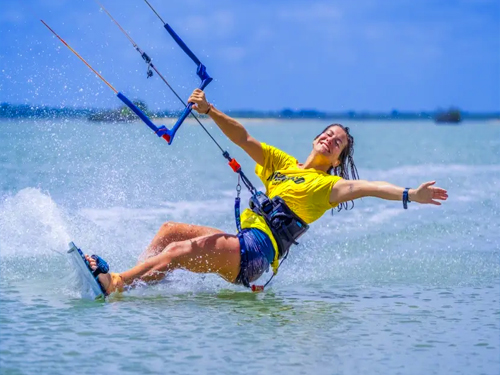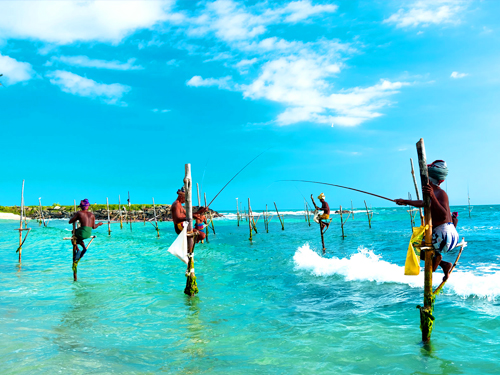Colombo in Sri Lanka
Geography
Colombo was introduced by the Portuguese in 1505. It is believed that the name derives from Kolonthota which means "port on river Kelani". The name Kola-ambathota, which is Sinhalese for "Harbor with leafy man trees", has been suggested as a possible source.
Sri Lanka, an island nation, is located in the Indian Ocean to the southwest of Bengal Bay and the southeast of the Arabian Sea. It is separated by the Indian subcontinent via the Gulf of Mannar, and the Palk Strait. The island's western shores are home to Colombo.
Colombo's geography is made up of both land and water. There are many canals in the city. The unique Beira Lake is located in the center of the city. This lake was once used by colonists to defend it for centuries. It is still a popular attraction and hosts regattas and other theatrical events. The Kelani River forms the northern and northeastern borders of Colombo.
The climate in Colombo is quite temperate throughout the year. The temperature ranges from March to April at 88°F (31°C) maximum. There is little variation in the relative daytime temperatures, but this is more noticeable during the dry winter months when minimums are 72°F (22°C). Only minor changes can be seen in the monsoon season from May to August and October to January when heavy rains are possible. The average annual precipitation is 94 inches (2400 mm).
History of Colombo
Excavations in caves located in the western plains region have revealed evidence of Paleolithic human settlements. The history of Sri Lankan is generally believed to have begun in the sixth century B.C.E. when the Indo-Aryan people (also known as the Sinhalese) migrated from India. Colombo is a port city with a natural harbor. It was first discovered by Roman, Arab and Chinese traders more than 2,000 years ago. Around the eighth century C.E., Arabian Muslims, whose main interest was trade, settled in Colombo.
Portuguese arrives
Portuguese were the first Europeans to reach Sri Lanka. Francisco de Almeida, a Portuguese explorer, arrived in Sri Lanka in 1505. He found the island divided into seven kingdoms and was unable to defend it from intruders. In 1517, the Portuguese established a fort at Colombo and gradually expanded their control over the coast. The Sinhalese relocated their capital to Kandy, an inland city that is more secure in 1592. Through the 16th century, intermittent warfare continued.
The Dutch signed a 1638 treaty with King Rajasinha II, Kandy, to aid in their war against the Portuguese. In return for a monopoly on the island's trading, While most of the island was under European control at the time, the hilly interior of the island remained autonomous, with Kandy as its capital. The Dutch had taken control of the entire island, except for the kingdom Kandy, by 1660. The Dutch left a legacy in the form of the Burgher peoples, a mixed Dutch-Sinhalese population.
British capture Colombo
Colombo was captured by the British in 1796. However, it remained a British military post until 1815 when the Kandyan Kingdom was ceded. In that year, Colombo became the capital of the newly established crown colony of Ceylon. The British started building houses and other civil structures around Colombo, unlike the Portuguese and Dutch who used it as a military fort.
Colombo became the island's administrative capital. The British built modern roads, schools, and churches to bring Western culture and education to the people. English was the primary language of governance until independence. John Macdowell, a Madras Service official, was the first person to be elected "collector" in order to administer Colombo. In 1833, the administration of Colombo was given to the Western Province's government agent.
Centuries under colonial rule had led to a decline in the indigenous administration of the city. In 1865, the British created a municipal council to train the local population in self-governance. The Legislative Council of Ceylon created the Colombo Municipal Council, which was first met on January 16, 1866. The region had a population of around 80,000 at the time.
Tourist attraction Places in Colombo
Gangaramaya, one of the oldest Buddhist temples located in Colombo was established by the scholar monk Hikkaduwe Sri SumangalaNayakaThera late in the 19th century. The temple was administered by Devundera Sri JinaratanaNayakeThera, his chief pupil. He was the one who established the foundation for the transformation of the temple into an institute of international reckoning.
The Ven. was the next chief incumbent. DevundaraKeerthi Sri SumangalaJinaratanaVacissaraThera was the teacher of the Ven. GalbodaGnanissara was the one who made Gangaramaya what is today. It is more than just a temple according to the traditional term. It is a place for worship and learning, as well as a cultural centre.
This tiny amusement park is a must-see for families visiting Colombo. This is a great local experience that includes a shopping center, rides, a bowling alley and an arcade. There's also a food court. A movie theater is available that shows both Bollywood and Western films. It's the only bowling alley in Colombo.
Laser tag, bumper cars and a bouncehouse are just a few of the many things you can do at the park. The mall brings in snow during December to create an indoor winter wonderland known as Snow World. The only place in Sri Lanka where you can celebrate White Christmas with Santa Claus. Excel World is located right next to Beira lake.
Sinhala's "NelumKuluna", the tallest skyscraper in Sri Lanka, is Colombo Lotus Tower. The Colombo lotus tower, which is located in Colombo, Sri Lanka, is one of the most popular tourist attractions. This tower, which stands at 356 meters high, is the highest tower in South Asia. It is also the 11th tallest in Asia and the 19th in the world. It is a popular tourist attraction in Sri Lanka.
This tower is essential if you are planning to visit the country. It serves as a transmission tower to radio and tv. It serves many leisure activities as well as being a communication tower. The tower has many tourist attractions, including shopping malls, banquet halls, suites in hotels, restaurants, museums and auditoriums. The top offers a panoramic view of the city from the revolving restaurant. Each 90 minute rotation, it completes one. It is one of the most prominent landmarks in Colombo. Because of its immense length, you can see it from up to 10kms away from the main site. The tower can accommodate approximately 50 radio and television broadcasters, as well as 20 telecommunications providers.
The Lotus tower attracts thousands of tourists each day. The tower is open to tourists 24 hours a day, 365 days a year. The tower's interiors are decorated for special occasions such as Pongal and Diwali, Eid and Christmas, among others. If you plan to visit Colombo, this tower is a must-see.
The National Museum of Colombo is Sri Lanka's largest museum. It was founded by Sir William Henry Gregory (British Governor of Ceylon) in January 1877. The museum is currently maintained by the Department of National Museum of the Central Government. It houses a number of important collections including the crown and the throne of the Kandyan rulers.
The museum is housed in a two-story building. It has a large, well-kept, lush green lawn in front of it that is shaded with powerful banyan trees. You will also see a fourth-century Buddha in the lobby as you enter the museum. You will be astonished to discover the museum's collections.
You will find many types of ancient art, carvings and statues from Sri Lanka's history, as well as a collection demon masks. Guns, swords and other items from colonial times are also available. The gallery has 19th-century reproductions from English paintings of Sri Lanka. This is a great opportunity for art lovers.
The royal throne, made in 1693 for King Wimaladharmasuriya, the 9th century bronze Bodhisattva Sandals and many other items are on display. This is just the beginning. You will be captivated by agricultural displays, as well as many other things that will leave an impression on your mind.
The Sri Lanka Planetarium, a public planetarium, is located in Colombo (Sri Lanka). It is the country's first and only planetarium and it is managed by the Ministry of Science, Technology, and Research.
The State Engineering Corporation established the Planetarium on February 1, 1965 as a special feature of the Ceylon Industrial Exhibition. It was also pre-cast on site. As a gift to Ceylon, the German Democratic Republic funded the building.
The artificial sky is created using a universal projector located at the centre of the building. It can be seen above the auditorium seating 570. Carl Zeiss AG East Germany produced the universal projector.
Best time to visit Sri Lanka Planetarium: 10.00am to 1.00 pm
Opening hours:
- Tuesday 8:30am to 4.00pm
- Wednesday 8:30am to 4.00pm
- Thursday 8:30am to 4.00pm
- Friday 8:30am to 4.00pm
- Saturday 8:30am to 4.00pm
- Sunday Closed
- Monday Closed
The Colombo Dutch Museum, a two-story beautiful building that preserves the history and architecture of Dutch colonial rule in Sri Lanka, is a treasure trove of amazing architecture. The Colombo Dutch Museum was originally a residence of Thomas Van Rhee, the Dutch governor. It was within this museum that a treaty with the Dutch was signed.
Since its inception, the Colombo Dutch Museum has served many purposes, including a college and military hospital, a police station, seminary, and even a postal office. This is evidence of the many activities that have occurred inside the Colombo Dutch Museum.
After the wall fell, the building was restored. Today, the museum houses over 3000 artifacts including furniture, coins and ceramics. It also contains many aspects of Dutch culture. You can visit the Colombo Dutch Museum, which has stood the test of time for hundreds and years.
The beautiful Viharamahadevipark is located in Colombo, a busy and crowded metropolis. This beautiful park is close to the National Museum. It is also one of the oldest and largest parks in Sri Lanka. For a truly unforgettable experience, the park offers stunning views of sunrise or sunset. The Viharamahadevi Park, formerly known as the Victoria Park, was renamed in honor of the mother King Dutugemunu.
Recent renovations have transformed Viharamahadevipark and made it a treasure in Colombo. Viharamahadevipark's beauty is highlighted by a large Buddha statue. It is also surrounded by water fountains that give it a feeling of serenity and calm.
A mini zoo, and children's playground are also available. Parks are a popular place for families. Couples can enjoy a relaxing time in the park while they have a picnic in the nearby park. There is an open stadium that can be used for various events, including concerts. You can find many food stalls near the stadium that offer delicious snacks and other tasty treats.
The National Zoological Garden of Sri Lanka, also known as the Colombo Zoo and the Dehiwala Zoo, is also called the Dehiwala Zoo. The sprawling zoo houses over 300 species of birds, fish, reptiles, animals, and birds from around the globe. It is a popular tourist destination. It covers an area of nearly 30 acres. The conservation of animals is one of the main goals of the zoo.
Many students visit the National Zoological Garden of Sri Lanka today to study and analyze different species of flora, fauna. A chimpanzee education program is available, which is regularly organized.
A beautiful butterfly garden is also available at the National Zoological Garden of Sri Lanka. It's adorned with small shrubs, trees and contains over 30 species of butterflies. You can also enjoy the beautiful fountains and colorful flowers. You can spend quality time at the zoo and learn about flora, fauna and other interesting things.
The National Zoological Garden has many facilities, including elephant and pony rides, boat rides, and restaurants with ice-cream shops. You can also pick up souvenirs to remember your experience. Make it a point of visiting the National Zoological Garden of Sri Lanka when you are in Colombo.
The NelumPokunaMahindarajapaksa Theater (or simply the NelumPokuna) is a major performing arts center in Colombo. NelumPokuna is a name that means "Lotus Pond". The architecture of the building draws inspiration from the 12th-century lotus pond in Sri Lanka's ancient city, Polonnaruwa. It was designed to allow performers and the long history of theatre and performance in Sri Lanka to thrive. The Beijing Institute of Architectural Design designed it and built it in Sri Lanka with the help of local architects.
The NelumPokuna opened in 2011 and covers approximately 14,000 square metres. The structure has two main theatres: an auditorium with a capacity of over 1200 persons and an open-air theater. On request, the front steps of the NelumPokuna may be transformed into an open-air theater. The building also has a library and modern facilities that enable research and education.
The NelumPokuna is centrally located in Colombo and has easy access to all the city's amenities. It is a popular location for foreign and local producers, as well as visitors. The theatre is surrounded by five-star hotels and shopping districts, and other attractions.
The Beira lake is a landmark in Colombo. It is located in the center of the capital. It provides much-needed relief to residents from the concrete jungle around them. Although it covers approximately 160 acres, its original size was more than twice. Beira Lake, which was created by the Portuguese in 16th century, was originally designed as a defense against the Sri Lankan rulers trying to overthrow their country's foreign invaders. The Portuguese filled the moat in order to defend themselves against foreign invaders, including live crocodiles.
The British took Sri Lanka under their control and removed the crocodiles. Beira Lake slowly began to lose its negative reputation and became a place of celebration. Recreational activities like rowing and sailing started to take part on its waters. This festive status eventually fell away.
The Beira Lake hosts many attractions, including the SeemaMalakaya meditation centre, an extension to the Gangaramaya Temple that floats on the lake's waters; Lovers Island, which is a lovely haven for couples; a jogging path, which can be a great way to get away the stresses of the city; as well as popular swan boat rides where two people can hire a manual-powered swan-shaped boat to sail across the lake.
The landmark of Colombo is the Pettah Floating Market. It was opened to the public in 2014 at the Bastian Mawtha on the Beira Lake. The entrance can be found on the west side, where you will find a flanking made of wood and marked 'The Floating Market.
A series of pavilions is the floating market, which can be found at the far end between the Pettah railway station and the bus station. The waters are lined with about 90 trade stalls, shops, and vendors selling fruits, vegetables, and flowers from the wooden boats that float lazily in the lake.
The area is surrounded by beautiful bodies of water and open skies, which create a peaceful and tranquil atmosphere. This region features beautiful wooden boards, grey floors, and red terracotta tile. It is a long and difficult task to shop here. Shops sell everything from local produce and vegetables to electronic and garment products at reasonable prices. The market is home to many restaurants and eateries that offer a pleasant atmosphere for dining. This is a quiet spot in the middle bustling city of Colombo, where people can relax and enjoy a free drink.
The Colombo Red Mosque (also known as Jami Ul-Alfar Masjid) is an architectural marvel for the world. Its unusual color patterns, unique yet stunning design, and extraordinary colors will amaze you. This oldest mosque, located in Pettah district with its tall minarets towers above the streets and buildings of the neighborhood. It was once a landmark for sailors heading towards Colombo port. Both men and women can access this mosque, but they must be dressed in appropriate clothes and covered up. This beauty is attributed to the unusual red tone.
Its unusual architecture, which is quite different from normal Muslim mosques, was created by either a qualified or unqualified builder. Deviating from normal onion-shaped domes, the mosque presents pomegranate-look-liking ones with hybrid structure. The religious structure, which is constructed with Indi-Saracenic architecture has Persian touches in many places, such as minarets. This oldest mosque in Colombo can be seen as a tourist attraction when it is combined with other color patterns, such as red and white swirling together.
The main spot for sea-bathing in Sri Lanka's island is Mount Lavinia Beach. Depending on the season, you can swim here and enjoy some spectacular sunsets. It can also be found in a city rich with history.
The original home of Sir Thomas Maitland, who was Governor General of Ceylon between 1805-1811, is the city's foundation. On his arrival on the island, Sir Thomas was greeted by a welcome party in his honour. He first noticed Lovina, a local dancer of the mestizo community, and he immediately fell in love with her. Sir Thomas fell in love with her charming smile and charms, and became obsessed with her.
Sir Thomas met his lover in secret, as it was unusual for a British officer to have an affair with a local dancer. Legend has it that she was smuggled into Sir Thomas' mansion via a tunnel that connected her father's well to a cellar within the house. History reveals that their love did not last as long as they thought. Sir Thomas Maitland was forced to leave the country in 1811 to go to Malta, where he died as a bachelor.
In 1920, the tunnel was sealed and the Gypsy community that had surrounded Governor's Mansion became a bustling modern city named after Lovina. The Governor's home, which he called "Mount Lavinia House", and his monument to his one and only love have been preserved in the walls and high ceilings that make up the Mount Lavinia Hotel. A statue of Lady Lavinia (the name the girl was later given) can still be found at the entrance to the Mount Lavinia Hotel.
Cemeteries are a great place to visit as they preserve the culture of the area. Kanatte, the city's principal cemetery, was established in the middle of the 19th century. There are many memorials from all religions and beliefs. Each section has its own section and has its own style of physical monuments.
Science fiction lovers love to visit the cemetery. It is home to Arthur C. Clarke, an iconic writer in sci-fi (2001: A Space Odyssey). Clarke was born in Sri Lanka during the British colony. He later retired from this country. It is located in central Colombo's Borella region.
Sri Lanka is an island and is well-known for its beautiful beaches and stunning views of the ocean. It is not always easy to find a spot where you can experience the crashing waves and, most importantly, the unobstructed view of sunset in Colombo. Galle Face Green attracts many people especially in the evenings, but it is not always empty in the afternoon, when there is little shade from the scorching heat. This stretch of land was originally used for horse racing and golf, and was called the Colpetty Race Course.
Galle Face Green is still a favorite spot for lovers, families, and picnickers. Although the sun is hot and the crows can be annoying, you can still relax on the beach, have meals, and enjoy the view. You can walk, sit or fly kites. The colorful kites bring joy to all ages and the skies above Galle Face Green during the kite season. People who love people watching will enjoy Galle Face Green because it attracts people from all cultures, ethnicities, and ages.
Many stalls are located along the beach, selling food, drinks and trinkets. A variety of wadey, a popular fried snack made with prawns, is sold at low prices. The achcharu (pickle), is perfectly sweet and spicy. Before you buy, it is best to walk around the kiosks and see the different food and drinks available. If you have concerns about the hygiene conditions at these stalls, you can find nearby restaurants that could serve you a delicious meal.
The Galle Face Hotel and The Kingsburry, Galadari Hotel as well as TajSamudra Colombo, Hilton Colombo, Galadari Hotel and Galadari Hotel are all within easy walking distance. There is also a Dutch Hospital nearby. You can also enjoy a meal at one of the many restaurants. The restaurants offer a variety of cuisines, so you have many choices. You won't be limited to eating at restaurants located near Galle Face Green by three-wheelers or buses. Also, you have the option of traveling by tuktuk bus or bus.
Colombo's Fort district is home to a bustling harbour, the stock market, and the World Trade Centre, the largest building in the country. This area also has a rich political and cultural history. Large swathes of it have been closed down due to civil war turmoil. This vibrant district still offers everything, from food and heritage to nightlife or casinos.
Pettah Market, also known as Manning Market, is an open-air market located in Pettah, a suburb of Colombo in Sri Lanka. Although the area is one of Colombo’s busiest, it can seem chaotic at first. But if you know where to find it on which street, you will be able to walk away with cool stuff at very low prices. You can find everything from electronics to fashion accessories to market vendors selling fresh fruits, meat, and seafood.
Pettah Market is a favorite shopping spot for both locals as well as foreign tourists. They take back a large variety of inexpensive stuff. To help you make the most of Pettah Market, we have created a guide.
Most of the Pettah businesses are owned by Muslims. They specialize in trading goods, while others are hawkers or small shop owners. Tamil emigrants from India specialize on the trade of gold and own jewelry shops. Every day, new shops are opening. Sea Street is Sri Lanka's main gold market. It attracts buyers from all over Sri Lanka and offers a wide range of gold jewelry. This is a long, narrow street lined with jewelry shops that have hundreds of shops each.
Sri Kaileswaram Temple is dedicated to Lord Shiva, Ganesha and is the oldest Hindu temple in Colombo, Sri Lanka. The temple was built over two centuries ago and is one of the most loved matrimonial spots in the region. It is known for its intricately designed structures, lotus-shaped carvings on the main doors, and many shrines to other deities like Skanda, Vairavar and Ambal.
Borella, Colombo's All Saints Church dates back to 1884. The church is known for its Gothic architecture, stained glass windows and 25 bells that were imported from West Germany. Each bell bears a saint's name.

 Safe Travels
Safe Travels Français
Français Deutsch
Deutsch עִברִית
עִברִית Italiano
Italiano Nederlands
Nederlands Polski
Polski Pусский
Pусский Español
Español
